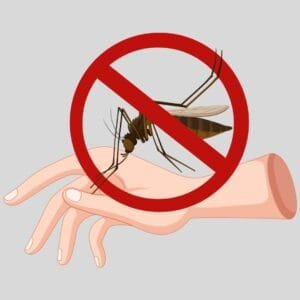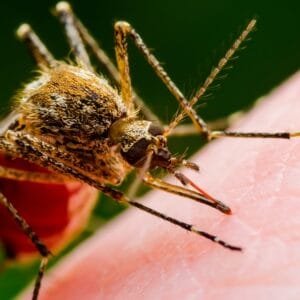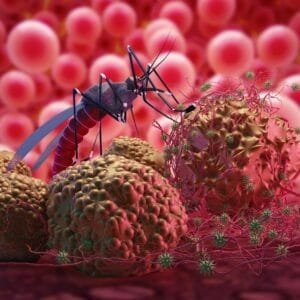Malaria: Causes, Symptoms, and Treatment
Malaria is a life-threatening infectious disease caused by parasites of the genus Plasmodium and transmitted through the bites of infected female Anopheles mosquitoes. Malaria is a significant global health issue, particularly in tropical and subtropical regions. While the disease can be severe, prompt diagnosis and treatment can prevent complications and save lives.



What is Malaria?
Malaria is a vector-borne disease that primarily affects red blood cells. When an infected mosquito bites a human, it introduces Plasmodium parasites into the bloodstream. These parasites travel to the liver, multiply, and then infect red blood cells, leading to recurrent fevers and other symptoms.
There are five species of Plasmodium that cause malaria in humans:
- Plasmodium falciparum (most deadly).
- Plasmodium vivax (causes relapses).
- Plasmodium malariae.
- Plasmodium ovale.
- Plasmodium knowlesi (primarily affects animals but can infect humans).
Causes of Malaria
Malaria is caused by Plasmodium parasites, which are transmitted to humans through the bite of an infected Anopheles mosquito.
Life Cycle of Malaria Parasite
- Mosquito Bite:
- Parasites enter the bloodstream through a mosquito bite.
- Liver Stage:
- Parasites travel to the liver, where they multiply.
- Blood Stage:
- Infected liver cells burst, releasing parasites that infect red blood cells.
- Spread:
- Some parasites form gametocytes, which can infect other mosquitoes and continue the cycle.
Symptoms of Malaria
Symptoms of malaria typically appear 10–15 days after the mosquito bite. The presentation of malaria may vary, but common signs include:
Early Symptoms
- Fever and Chills:
- Cyclical fevers with intense chills and sweating.
- Headache:
- Persistent headaches, often severe.
- Muscle Pain:
- Generalized muscle and joint aches.
- Fatigue:
- Severe tiredness and weakness.
Severe Symptoms
- Jaundice:
- Yellowing of the skin and eyes due to liver damage.
- Seizures:
- Often seen in cerebral malaria caused by P. falciparum.
- Respiratory Distress:
- Difficulty breathing due to pulmonary complications.
- Shock or Organ Failure:
- Life-threatening complications in severe malaria.
Risk Factors for Malaria
Several factors increase the risk of contracting malaria or developing severe disease:
- Living in or Traveling to Endemic Areas:
- Regions with high malaria transmission include sub-Saharan Africa, Southeast Asia, and parts of South America.
- Pregnancy:
- Pregnant women are more vulnerable due to weakened immunity.
- Young Children:
- Their immune systems are less developed.
- Immunocompromised Individuals:
- People with HIV/AIDS or other immune conditions.
- Lack of Preventive Measures:
- Not using bed nets or taking prophylactic medications in endemic areas.
Diagnosis of Malaria
Malaria is diagnosed through clinical evaluation and laboratory tests:
1. Blood Smear Microscopy:
- A gold standard for malaria diagnosis, it detects Plasmodium parasites under a microscope.
2. Rapid Diagnostic Tests (RDTs):
- Quick tests that identify malaria antigens in the blood.
3. Polymerase Chain Reaction (PCR):
- Detects malaria DNA for highly sensitive diagnosis.
4. Complete Blood Count (CBC):
- Identifies anemia or low platelet count, common in malaria.
Treatment Options for Malaria
Effective treatment depends on the type of Plasmodium parasite, severity of infection, and patient condition. Common treatments include:
Medications
- Artemisinin-Based Combination Therapies (ACTs):
- The first-line treatment for P. falciparum malaria.
- Examples: Artemether-lumefantrine, artesunate-amodiaquine.
- Chloroquine:
- Used for P. vivax or P. malariae, where resistance is absent.
- Primaquine:
- Clears dormant liver stages of P. vivax and P. ovale to prevent relapses.
- Quinine and Doxycycline:
- Alternative treatments for severe malaria or drug-resistant cases.
Severe Malaria Treatment
- Intravenous Artesunate:
- Recommended for severe cases, especially in P. falciparum infections.
- Supportive Care:
- Includes hydration, blood transfusions, and oxygen therapy.
Preventing Malaria
Preventive measures are vital for reducing malaria transmission and protecting at-risk populations:
1. Mosquito Control
- Insecticide-Treated Bed Nets (ITNs):
- Reduces mosquito bites during sleep.
- Indoor Residual Spraying (IRS):
- Kills mosquitoes in homes.
2. Prophylactic Medications
- Recommended for travelers to malaria-endemic areas.
- Common drugs include:
- Atovaquone-proguanil.
- Mefloquine.
- Doxycycline.
3. Vaccination
- The RTS,S/AS01 (Mosquirix) vaccine has shown promise in reducing P. falciparum infections in children.
4. Avoid Mosquito Bites
- Wear long-sleeved clothing and use insect repellents containing DEET.
Complications of Malaria
If untreated, malaria can lead to life-threatening complications:
- Cerebral Malaria:
- Affects the brain, causing seizures, confusion, or coma.
- Severe Anemia:
- Due to destruction of red blood cells.
- Acute Respiratory Distress Syndrome (ARDS):
- Fluid buildup in the lungs, making breathing difficult.
- Organ Failure:
- Kidney failure, liver failure, or spleen damage.
FAQs about Malaria
1. What causes malaria?
Malaria is caused by Plasmodium parasites transmitted through bites from infected Anopheles mosquitoes.
2. What are the symptoms of malaria?
Symptoms include fever, chills, headache, muscle pain, fatigue, and, in severe cases, seizures or jaundice.
3. Can malaria be cured?
Yes, malaria is curable with prompt diagnosis and proper treatment using antimalarial medications.
4. How can malaria be prevented?
Preventive measures include using bed nets, taking prophylactic drugs, and controlling mosquito populations.
5. Who is at risk of severe malaria?
Young children, pregnant women, and immunocompromised individuals are at higher risk of severe malaria.
Conclusion
Malaria remains a global health challenge, particularly in tropical and subtropical regions. However, with advances in medicine, prevention, and public health initiatives, its impact can be significantly reduced. Early diagnosis, prompt treatment, and effective preventive measures are key to combating this disease. If you are traveling to a malaria-endemic area or experiencing symptoms, consult a healthcare provider for guidance and care.
